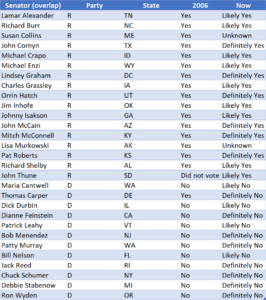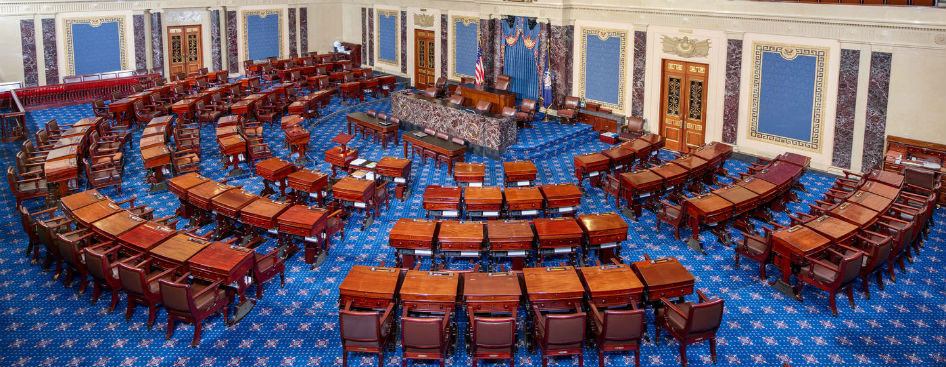This story is part of a series examining the record and views of Judge Kavanaugh, who was nominated to the Supreme Court on July 9.
The last time Judge Kavanaugh went through the rigmarole of the U.S. Senate confirmation process, he cleared a 57-36 majority—only after a three-year battle to get to a floor vote. That was to get on the D.C. Circuit. He’s now facing another confirmation battle with even bigger stakes and what is sure to be a slimmer margin.
There are 29 senators that were around in 2006 and are still in the Senate today—17 Republicans and 12 Democrats. Only 28 voted for Kavanaugh back then because John Thune (R-SD) did not vote. Barring some extraordinary revelation about Kavanaugh, Thune, like other conservative Republican senators, is a virtual lock to vote yes.
The make-or-break votes leading up to the confirmation hearing are Susan Collins (R-ME) and Lisa Murkowski (R-AK), who were both yes votes for Kavanaugh in 2006 but have not yet publicly stated how they will vote this time around. Both women hold Kavanaugh’s fate in their hands.
One crucial factor is Kavanaugh’s position on Roe v. Wade, which he has not yet had occasion to address directly as a judge (although as a nominee he said he would follow it faithfully at the D.C. Circuit). Collins has said she would not support a nominee with “demonstrated hostility” toward Roe. On Friday (July 27), both senators signaled that they were feeling less constituent pressure on Kavanaugh than during the health care debate according to the Washington Post.
Thomas Carper (D-DE) is the only sitting Democrat who voted for Kavanaugh in 2006, but he has made clear he intends to switch his vote this time around. Carper, who faces re-election this November, called Kavanaugh’s 12 years on the D.C. Circuit a “profound disappointment” and said his record “stands in stark contrast to what the majority of the American people want.”
Other notable voters from 2006 include Attorney General Jeff Sessions (yes) and Senators Hillary Clinton (D-NY) and Ted Kennedy (D-MA), who both voted against Kavanaugh.
Kavanaugh also managed to get two other yes votes from the left side of the aisle—former Senators Mary Landrieu (D-LA) and Robert Byrd (D-WV). Landrieu was succeeded by Bill Cassidy (R-LA), who is a likely yes vote for Kavanaugh. Joe Manchin (D-WV) eventually took Byrd’s seat and is an unknown vote right now. He is one of a handful of red-state Democrats facing an election year who could plausibly vote for Kavanaugh, and Democrats have been lobbying him hard to hold the line. Manchin will be the first Democrat to meet with Kavanaugh on Monday (July 30).
According to SCOTUS Watch, a website that tracks public statements made by senators about how they plan to vote and tallies them into a likely vote count, there are only 10 “unknown” votes remaining in the Senate—three Republicans and seven Democrats. If all of the Dems vote along party lines and one Republican votes no, then the Senate will be deadlocked at 50-50, which will require Vice President Mike Pence to cast the tie-breaking vote.
Here is a full list of the 29 senators around then and now along with their 2018 vote status, according to SCOTUS Watch:

![]()

